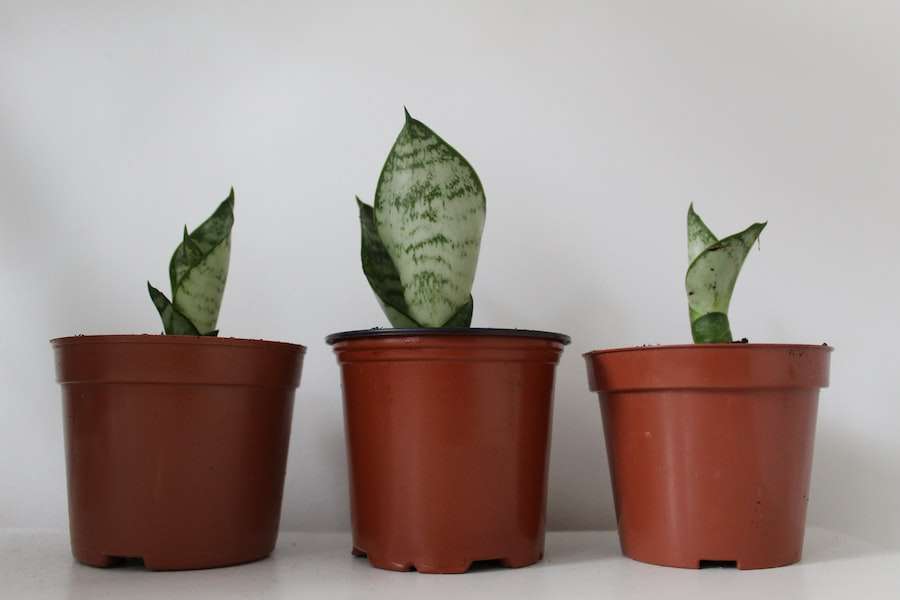Succulent plants are a popular choice for many gardeners due to their unique and attractive appearance. These plants have thick, fleshy leaves and stems that store water, allowing them to survive in arid conditions. Propagating succulents is a great way to expand your collection and share these beautiful plants with others.
There are several benefits to propagating succulents. Firstly, it allows you to create more plants without having to spend money on buying new ones. Additionally, propagating succulents can be a rewarding and enjoyable hobby. It gives you the opportunity to learn more about these plants and develop your gardening skills.
Choosing the right propagation method is crucial for the success of your succulent propagation. Different methods work best for different types of succulents, so it’s important to understand the various techniques and choose the one that suits your plant best.
Propagation by Leaf Cuttings
Leaf cuttings are one of the most common methods of propagating succulents. This method involves taking a leaf from a mature plant and allowing it to develop roots and grow into a new plant. Leaf cuttings are particularly effective for succulents that have fleshy leaves, such as echeverias and sedums.
To propagate succulents through leaf cuttings, start by selecting a healthy leaf from the parent plant. Gently twist or cut the leaf from the stem, making sure to include the base of the leaf where it attaches to the stem. Allow the leaf cutting to dry for a few days until a callus forms over the cut end.
Once the callus has formed, place the leaf cutting on top of well-draining soil or a bed of sand. Mist the cutting with water occasionally to keep it moist, but be careful not to overwater as this can cause rotting. After a few weeks, roots should start to develop, and a new plant will begin to grow from the base of the leaf.
Propagation by Stem Cuttings
Stem cuttings are another popular method of propagating succulents. This method involves taking a section of the stem from a mature plant and allowing it to develop roots and grow into a new plant. Stem cuttings are particularly effective for succulents that have woody or semi-woody stems, such as jade plants and aeoniums.
To propagate succulents through stem cuttings, start by selecting a healthy stem from the parent plant. Use a clean, sharp knife or pair of scissors to make a clean cut just below a node, which is where the leaves attach to the stem. Allow the cutting to dry for a few days until a callus forms over the cut end.
Once the callus has formed, place the stem cutting in well-draining soil or a mixture of perlite and peat moss. Water the cutting lightly and keep it in a warm, bright location. After a few weeks, roots should start to develop, and new growth will appear at the top of the cutting.
Propagation by Division
Division is another method of propagating succulents that works well for plants that have clumping or rosette growth habits, such as hens and chicks (Sempervivum) and agave plants. This method involves separating an established plant into smaller sections, each with its own roots and shoots.
To propagate succulents through division, start by carefully removing the parent plant from its pot or garden bed. Gently shake off any excess soil to expose the roots. Use a clean, sharp knife or pair of scissors to divide the plant into smaller sections, making sure each section has its own roots and shoots.
Once divided, replant each section in its own pot or garden bed filled with well-draining soil. Water the newly divided plants lightly and keep them in a warm, bright location. After a few weeks, new growth should appear, indicating that the division was successful.
Propagation by Offsets
Offsets, also known as pups or babies, are small plants that grow from the base of the parent plant. This method of propagation is commonly used for succulents that produce offsets, such as aloe vera and haworthia. Offsets are essentially clones of the parent plant and can be easily separated and grown into new plants.
To propagate succulents through offsets, start by carefully removing the offset from the parent plant. Gently twist or cut the offset from the base of the parent plant, making sure to include some roots. Allow the offset to dry for a few days until a callus forms over the cut end.
Once the callus has formed, plant the offset in well-draining soil or a mixture of perlite and peat moss. Water the offset lightly and keep it in a warm, bright location. After a few weeks, roots should start to develop, and new growth will appear at the top of the offset.
Propagation by Seed

Seed propagation is another method of propagating succulents, although it is less commonly used compared to other methods. This method involves collecting seeds from mature plants and sowing them in a suitable growing medium. Seed propagation is particularly effective for succulents that produce abundant seeds, such as cacti and agave plants.
To propagate succulents through seed, start by collecting ripe seeds from the parent plant. Sow the seeds in a well-draining soil mix or a mixture of sand and peat moss. Cover the seeds lightly with soil and mist them with water to keep them moist.
Place the seed tray or pot in a warm location with bright, indirect light. Keep the soil consistently moist but not waterlogged. After a few weeks, the seeds should start to germinate, and small seedlings will begin to emerge. It may take several months or even years for the seedlings to grow into mature plants.
Choosing the Right Propagation Method
When choosing the right propagation method for your succulent plants, there are several factors to consider. Firstly, consider the type of succulent you are propagating. Some succulents are better suited to certain propagation methods than others. For example, leaf cuttings work well for succulents with fleshy leaves, while stem cuttings are more suitable for succulents with woody or semi-woody stems.
Another factor to consider is the time and effort required for each propagation method. Some methods, such as leaf and stem cuttings, can produce new plants relatively quickly, while others, such as seed propagation, can take much longer. Consider your own patience and gardening goals when choosing a propagation method.
It’s also important to match the propagation method with the specific needs of the succulent species you are propagating. Some succulents may require more specialized care or specific growing conditions to successfully propagate. Research the specific requirements of your succulent species and choose a propagation method that aligns with those needs.
Tips for Successful Succulent Propagation
Proper care and maintenance are essential for successful succulent propagation. Here are some tips to help you achieve success:
1. Use well-draining soil: Succulents prefer soil that allows excess water to drain away quickly. Use a mixture of perlite, peat moss, and sand to create a well-draining soil mix for your propagated succulents.
2. Provide adequate light: Succulents thrive in bright, indirect light. Place your propagated succulents in a location where they will receive at least six hours of sunlight per day.
3. Water sparingly: Succulents are adapted to survive in arid conditions and can easily be overwatered. Water your propagated succulents sparingly, allowing the soil to dry out between waterings.
4. Avoid direct sunlight: While succulents need bright light, direct sunlight can be too intense and may cause sunburn or damage to the leaves. Place your propagated succulents in a location where they will receive bright, indirect light.
5. Protect from extreme temperatures: Succulents are sensitive to extreme temperatures, both hot and cold. Avoid placing your propagated succulents in locations where they will be exposed to extreme heat or cold.
Common Mistakes to Avoid in Succulent Propagation
While propagating succulents can be a rewarding and enjoyable experience, there are some common mistakes that beginners often make. Here are a few mistakes to avoid:
1. Overwatering: Succulents are adapted to survive in dry conditions and can easily be overwatered. Water your propagated succulents sparingly, allowing the soil to dry out between waterings.
2. Underwatering: While succulents don’t require frequent watering, they still need some moisture to survive. Make sure to water your propagated succulents regularly, especially during hot, dry weather.
3. Using the wrong soil mix: Succulents require well-draining soil that allows excess water to drain away quickly. Avoid using heavy or compacted soil mixes that retain moisture.
4. Placing the cuttings in direct sunlight: While succulents need bright light, direct sunlight can be too intense and may cause sunburn or damage to the leaves. Place your propagated succulents in a location where they will receive bright, indirect light.
Frequently Asked Questions about Succulent Propagation
1. How long does it take for succulent cuttings to root?
The time it takes for succulent cuttings to root can vary depending on the type of succulent and the propagation method used. Leaf cuttings generally take a few weeks to develop roots, while stem cuttings may take slightly longer. It’s important to be patient and allow the cuttings enough time to establish roots before expecting significant growth.
2. Can succulent cuttings be propagated in water?
While some plants can be propagated in water, succulents are not well-suited to this method. Succulents prefer well-draining soil and can easily rot if left in water for too long. It’s best to propagate succulent cuttings directly in soil or a suitable growing medium.
3. How often should I water my propagated succulents?
Succulents have unique water requirements and should be watered sparingly. Allow the soil to dry out between waterings, and only water when the top inch of soil feels dry to the touch. Overwatering can lead to root rot and other issues, so it’s important to find the right balance.
4. Can I propagate succulents during winter?
While it is possible to propagate succulents during winter, it may be more challenging due to the lower light levels and cooler temperatures. Succulents generally prefer warm, bright conditions for optimal growth. If propagating during winter, make sure to provide adequate light and protect the cuttings from cold drafts.
Conclusion:
Propagating succulents is a rewarding and enjoyable way to expand your collection and share these beautiful plants with others. There are several methods of propagation, including leaf cuttings, stem cuttings, division, offsets, and seed propagation. Each method has its own advantages and is best suited for different types of succulents.
When propagating succulents, it’s important to choose the right method based on the specific needs of the plant species you are working with. Proper care and maintenance are also crucial for successful propagation. Providing well-draining soil, adequate light, and sparingly watering your propagated succulents will help them thrive.
While there may be some challenges and mistakes along the way, don’t be discouraged. Succulent propagation is a learning process, and with time and experience, you will become more skilled at propagating these unique and fascinating plants. So go ahead, give it a try, and enjoy the satisfaction of growing your own succulent garden.
If you’re interested in succulent propagation methods, you might also enjoy reading about “Surviving the Chill: How to Protect Your Succulents from Extreme Cold – Understanding the Threshold Temperature for Succulent Survival.” This article provides valuable insights and tips on how to keep your succulents safe during cold weather conditions. Check it out here.
FAQs
What is succulent propagation?
Succulent propagation is the process of growing new succulent plants from existing ones. This can be done through various methods such as leaf cuttings, stem cuttings, and division.
What are the benefits of propagating succulents?
Propagating succulents allows you to create new plants for your collection without having to purchase them. It also allows you to share your plants with others and can be a fun and rewarding hobby.
What are the different methods of succulent propagation?
The most common methods of succulent propagation are leaf cuttings, stem cuttings, and division. Leaf cuttings involve removing a leaf from the parent plant and allowing it to grow roots and a new plant. Stem cuttings involve cutting a stem from the parent plant and allowing it to grow roots and a new plant. Division involves separating a mature plant into smaller sections and replanting them.
What are the best conditions for succulent propagation?
Succulent propagation is best done in warm, dry conditions with plenty of sunlight. It is important to use well-draining soil and to avoid overwatering the new plants.
How long does it take for succulent cuttings to root?
The time it takes for succulent cuttings to root can vary depending on the method used and the type of succulent. Leaf cuttings can take several weeks to several months to root, while stem cuttings can root in as little as a week. Division can result in immediate rooting.
What are some common mistakes to avoid when propagating succulents?
Common mistakes to avoid when propagating succulents include overwatering, using soil that is too heavy or not well-draining, and not providing enough sunlight. It is also important to be patient and not disturb the new plants while they are rooting.

















Add Comment